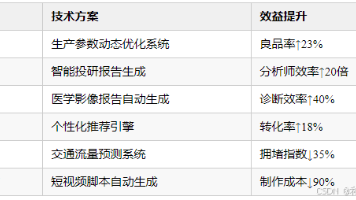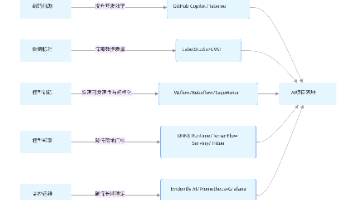在 Java 后端开发中,特别是使用 Spring Boot 框架时,经常需要处理来自前端的请求,这些请求可能包含多个对象的入参。处理这些参数的方式有多种,下面详细介绍几种常见的方法。
1. 使用自定义 DTO 对象
这是最常见的方法之一。创建一个包含所有需要传递对象的自定义 DTO(数据传输对象)类,然后使用 @RequestBody 注解接收整个 DTO 对象。
示例代码
假设我们需要接收用户和地址两个对象:
// 用户对象
public class User {
private String name;
private String email;
// getters and setters
}
// 地址对象
public class Address {
private String street;
private String city;
// getters and setters
}
// 自定义 DTO 对象
public class UserAddressDTO {
private User user;
private Address address;
// getters and setters
}
// 控制器
@RestController
public class UserController {
@PostMapping("/user")
public String createUser(@RequestBody UserAddressDTO userAddressDTO) {
User user = userAddressDTO.getUser();
Address address = userAddressDTO.getAddress();
// 处理业务逻辑
return "User and address created successfully";
}
}- 1.
- 2.
- 3.
- 4.
- 5.
- 6.
- 7.
- 8.
- 9.
- 10.
- 11.
- 12.
- 13.
- 14.
- 15.
- 16.
- 17.
- 18.
- 19.
- 20.
- 21.
- 22.
- 23.
- 24.
- 25.
- 26.
- 27.
- 28.
- 29.
- 30.
- 31.
- 32.
- 33.
2. 使用 Map 接收多个对象
另一种方法是使用 Map 作为 @RequestBody 的参数类型,然后在控制器中手动解析这些参数。
示例代码
@RestController
public class UserController {
@PostMapping("/user")
public String createUser(@RequestBody Map<String, Object> params) {
User user = (User) params.get("user");
Address address = (Address) params.get("address");
// 处理业务逻辑
return "User and address created successfully";
}
}- 1.
- 2.
- 3.
- 4.
- 5.
- 6.
- 7.
- 8.
- 9.
- 10.
- 11.
3. 使用多个 @RequestBody 注解
虽然 Spring MVC 不支持在一个方法中使用多个 @RequestBody 注解,但可以通过自定义参数解析器来实现类似的功能。
示例代码
3.1 创建自定义注解
import java.lang.annotation.ElementType;
import java.lang.annotation.Retention;
import java.lang.annotation.RetentionPolicy;
import java.lang.annotation.Target;
@Target(ElementType.PARAMETER)
@Retention(RetentionPolicy.RUNTIME)
public @interface MultiRequestBody {
String value() default "";
}- 1.
- 2.
- 3.
- 4.
- 5.
- 6.
- 7.
- 8.
- 9.
- 10.
3.2 创建自定义参数解析器
import com.fasterxml.jackson.databind.ObjectMapper;
import org.springframework.core.MethodParameter;
import org.springframework.web.bind.support.WebDataBinderFactory;
import org.springframework.web.context.request.NativeWebRequest;
import org.springframework.web.method.support.HandlerMethodArgumentResolver;
import org.springframework.web.method.support.ModelAndViewContainer;
import java.io.IOException;
import java.util.Map;
public class MultiRequestBodyArgumentResolver implements HandlerMethodArgumentResolver {
private final ObjectMapper objectMapper;
public MultiRequestBodyArgumentResolver(ObjectMapper objectMapper) {
this.objectMapper = objectMapper;
}
@Override
public boolean supportsParameter(MethodParameter parameter) {
return parameter.hasParameterAnnotation(MultiRequestBody.class);
}
@Override
public Object resolveArgument(MethodParameter parameter, ModelAndViewContainer mavContainer, NativeWebRequest webRequest, WebDataBinderFactory binderFactory) throws Exception {
String json = webRequest.getNativeRequest(HttpServletRequest.class).getReader().lines().collect(Collectors.joining(System.lineSeparator()));
Map<String, Object> map = objectMapper.readValue(json, Map.class);
String key = parameter.getParameterAnnotation(MultiRequestBody.class).value();
return objectMapper.convertValue(map.get(key), parameter.getParameterType());
}
}- 1.
- 2.
- 3.
- 4.
- 5.
- 6.
- 7.
- 8.
- 9.
- 10.
- 11.
- 12.
- 13.
- 14.
- 15.
- 16.
- 17.
- 18.
- 19.
- 20.
- 21.
- 22.
- 23.
- 24.
- 25.
- 26.
- 27.
- 28.
- 29.
- 30.
- 31.
3.3 注册自定义参数解析器
import org.springframework.context.annotation.Configuration;
import org.springframework.web.method.support.HandlerMethodArgumentResolver;
import org.springframework.web.servlet.config.annotation.WebMvcConfigurer;
import java.util.List;
@Configuration
public class WebConfig implements WebMvcConfigurer {
private final ObjectMapper objectMapper;
public WebConfig(ObjectMapper objectMapper) {
this.objectMapper = objectMapper;
}
@Override
public void addArgumentResolvers(List<HandlerMethodArgumentResolver> resolvers) {
resolvers.add(new MultiRequestBodyArgumentResolver(objectMapper));
}
}- 1.
- 2.
- 3.
- 4.
- 5.
- 6.
- 7.
- 8.
- 9.
- 10.
- 11.
- 12.
- 13.
- 14.
- 15.
- 16.
- 17.
- 18.
- 19.
- 20.
3.4 使用自定义注解
4. 使用 @RequestParam 注解
如果前端传递的是表单数据,可以使用 @RequestParam 注解来接收多个对象。
示例代码
@RestController
public class UserController {
@PostMapping("/user")
public String createUser(@RequestParam("user") String userJson, @RequestParam("address") String addressJson) {
ObjectMapper objectMapper = new ObjectMapper();
try {
User user = objectMapper.readValue(userJson, User.class);
Address address = objectMapper.readValue(addressJson, Address.class);
// 处理业务逻辑
return "User and address created successfully";
} catch (IOException e) {
e.printStackTrace();
return "Failed to create user and address";
}
}
}- 1.
- 2.
- 3.
- 4.
- 5.
- 6.
- 7.
- 8.
- 9.
- 10.
- 11.
- 12.
- 13.
- 14.
- 15.
- 16.
- 17.
总结
以上介绍了几种在 Java 后端接收多个对象入参的方法。每种方法都有其适用场景和优缺点,可以根据具体需求选择合适的方法。使用自定义 DTO 对象是最简单和推荐的方法,而使用自定义参数解析器则提供了更高的灵活性。








 已为社区贡献24条内容
已为社区贡献24条内容

所有评论(0)